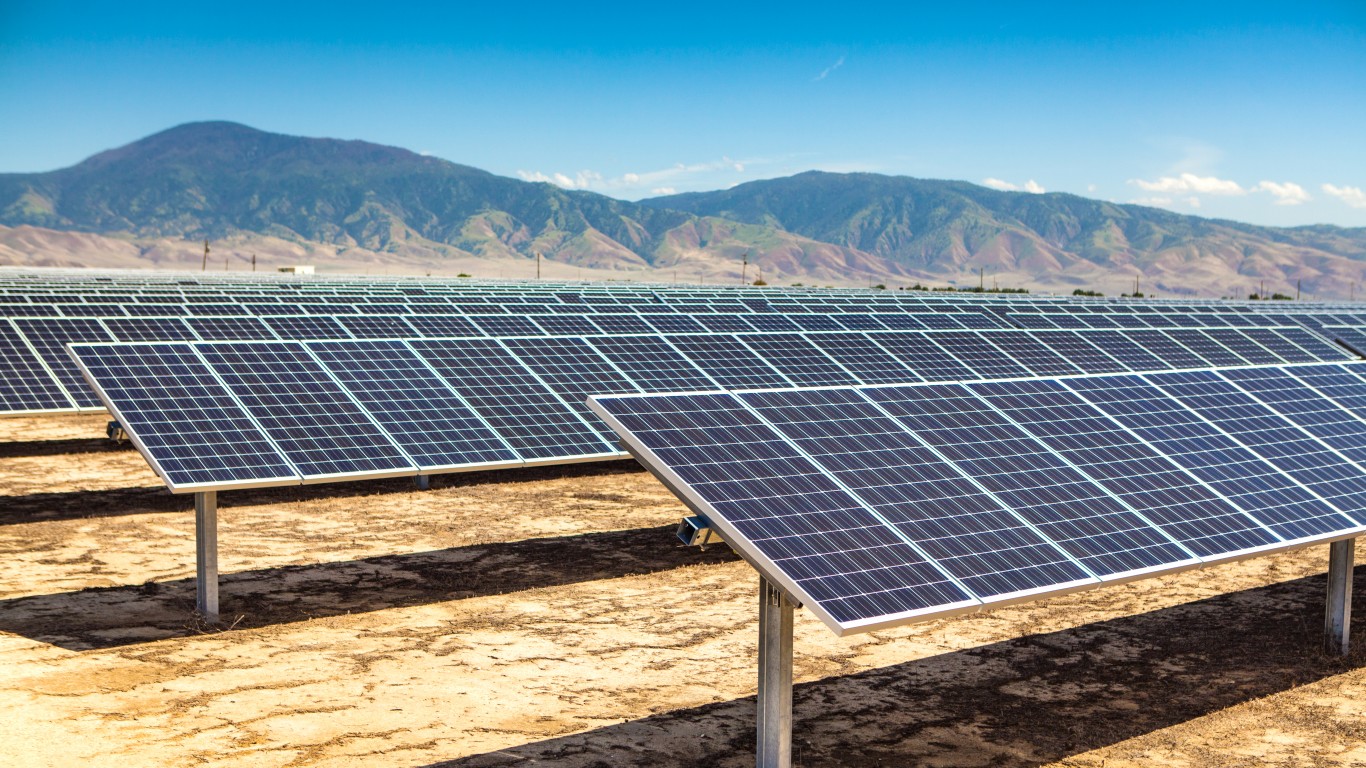Energy
Alternative and Renewable Energy Leaders Learn They Are Tied to Oil and Gas Too

Published:

If the wider spread of COVID-19 wasn’t bad enough for the public and the markets, now an oil price war between Russia and Saudi Arabia is pouring more salt on the wound. Oil had been challenging $30 on Sunday in the futures trading session, but a barrel of West Texas Intermediate crude was last seen down about 18% at $32.97. Many people in America and around the world want to see gas and oil, and particularly coal, disappear for the future for sources of energy. That puts the focus on renewables and alternatives, from solar and wind, to electric cars and buses, to biofuels, to microgrids with battery storage, self-sufficient energy systems and so on.
24/7 Wall St. already has covered the coronavirus carnage on the markets in depth, but the new price war in oil also have a very serious implication for clean and renewable energy companies. It turns out that high oil and fossil fuel prices help drive the development and competitiveness of alternative energy. Rock-bottom prices in dirty energy makes the relative cost equation that much worse. The dirty secret that’s not really a secret is that alternative energy companies have cumulatively lost many billions of dollars over the past two decades, even if some companies have managed to become profitable.
We wanted to look up and down the alternative energy sector patch to see just how bad the carnage was on Monday, March 9, 2020. GasBuddy showed that gasoline is now down well under $2 per gallon in many cities and states, down from nearly $3.00 per gallon at the start of 2019. That makes the lifetime ownership comparison that much less unattractive to pay up for the electric vehicles. Low natural gas prices also make solar and wind energy that much less able to compete without tax or government subsidies.
Tesla Inc. (NASDAQ: TSLA) is the king of the electric vehicle market. Tesla was trading down about $75 (10.7%) at $629.00 on Monday afternoon. That’s down from a high of $968.99 just last month.
Nio Ltd. (NYSE: NIO), often touted as “the Tesla of China,” was down just 5.7% at $3.35 on Monday, largely on the assumption that China is going to support it.
First Solar Inc. (NASDAQ: FSLR) closed down 4.6% at $43.37 on Friday, and on Monday afternoon it was down 8.4% at $39.75.
Enphase Energy Inc. (NASDAQ: ENPH), which makes inverters for solar energy, was down 13% at $46.09 on Monday. That makes its recent financing that much more important for the company.
SunPower Corp. (NASDAQ: SPWR) was down over 8.5% at $8.55 on Friday, but it was down 16% at $7.17 on Monday. Its breakup may now be harder to explain if the metrics have changed.
Renewable Energy Group Inc. (NASDAQ: REGI) is a leader in biofuels. After closing down less than 1% at $26.99 on Friday, it was down almost 14% at $23.30 on Monday.
Lithium-related companies, which sell their resources to battery-makers that power electric vehicles, were being hit hard on Monday as well. After all, if electric cars are now less competitive the demand to rush out and build more giant battery packs may continue to be a hard sell.
Albemarle Corp. (NYSE: ALB) was down 2.5% at $82.60 on Friday and was down another 10.9% at $73.61 on Monday. Its smaller rival, Livent Corp. (NYSE: LTHM), was down 2.9% at $8.61 on Friday and down 8.6% at $7.86 on Monday afternoon.
Bloom Energy Corp. (NYSE: BE) had been trying to recover from last year’s carnage, but the shares were down 9.6% at $8.28 on Monday afternoon.
Obviously, this is only a sliver of the alternative energy and renewable energy space, but it shows just how badly these can be hurt if oil prices (and gas prices) are going to now face a much lower future.
Credit card companies are pulling out all the stops, with the issuers are offering insane travel rewards and perks.
We’re talking huge sign-up bonuses, points on every purchase, and benefits like lounge access, travel credits, and free hotel nights. For travelers, these rewards can add up to thousands of dollars in flights, upgrades, and luxury experiences every year.
It’s like getting paid to travel — and it’s available to qualified borrowers who know where to look.
We’ve rounded up some of the best travel credit cards on the market. Click here to see the list. Don’t miss these offers — they won’t be this good forever.
Thank you for reading! Have some feedback for us?
Contact the 24/7 Wall St. editorial team.